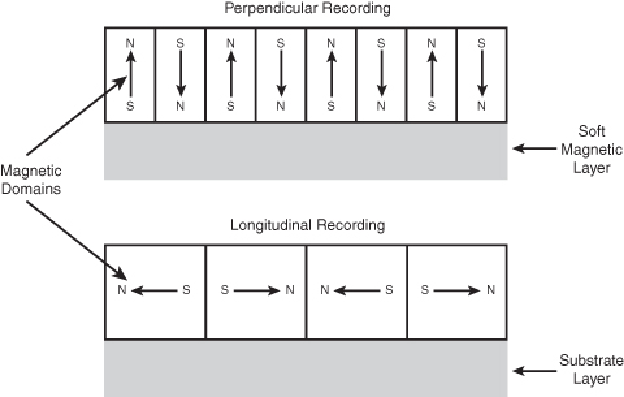Hardware Reference
In-Depth Information
Conventional magnetic recording places magnetic domains longitudinally, meaning the
domains lie end to end on the disk. This not only limits the density of the domains, but
also helps to enable the superparamagnetic effect. Long ago it was realized that if one
could place the domains perpendicular to the media (also called a
vertical recording
), the
densitycouldbeincreased,ascouldtheresistanceofthedomainstothesuperparamagnet-
ic effect. Although the concept was easy to understand, actually implementing it has been
difficult.
Unlike GMR heads and AFC media—both of which can be added relatively easily to ex-
isting drive technologies—perpendicular recording requires entirely new read/write head
designs.
Figure 8.14
shows the difference between perpendicular and longitudinal record-
ing. You can get at least twice the number of magnetic domains in the same space with
perpendicular recording.
Using perpendicular recording, the heads are designed to write deep into the media, using
a thicker soft magnetic underlayer as a return path for the magnetic field. This enables the
domains to be vertically aligned, and thus placed much more closely together without un-
wanted interaction problems.
Perpendicular recording was first demonstrated in the late nineteenth century by Danish
scientist Valdemar Poulsen, who was also the first person to demonstrate that sound could
be recorded magnetically. There weren't many advances in perpendicular recording un-
til 1976 when Dr. Shun-ichi Iwasaki (president of the Tohoku Institute of Technology in
Japan) verified the distinct density advantages in perpendicular recording. Then in 1978,

